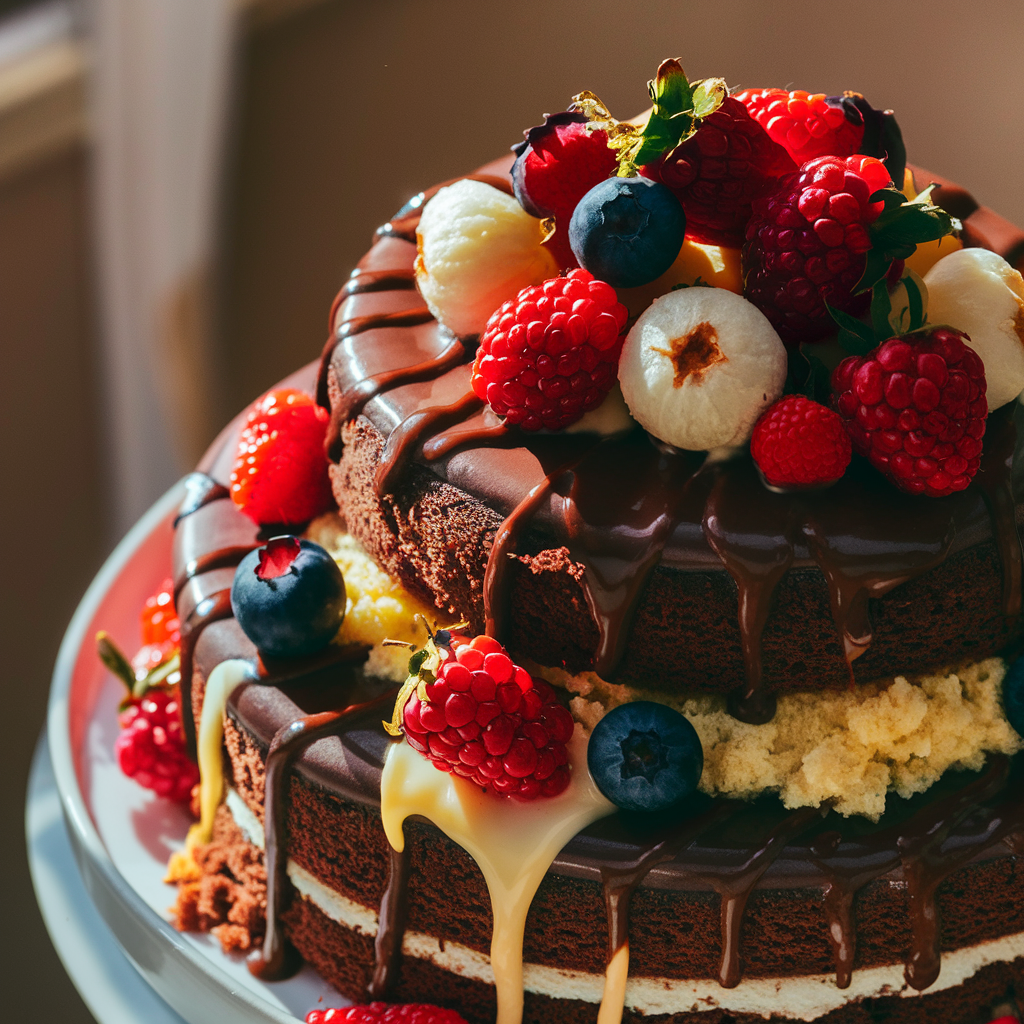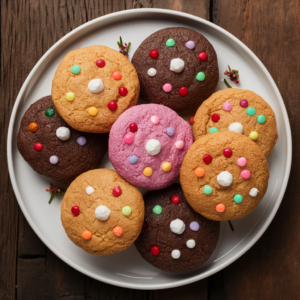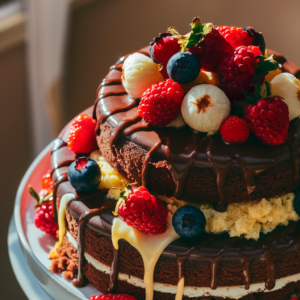When you browse the baking aisle of a supermarket, the variety of mixes can be both tempting and confusing. Among the most popular are cookie mixes and cake mixes, which promise delicious results with minimal effort. Although they seem similar, these two mixes serve different purposes and aren’t interchangeable. Understanding the differences between cookie mix and cake mix is crucial for successful baking. This article will explore the key differences, ingredients, and how each mix behaves when prepared and baked. By the end, you’ll know how to customize each mix to suit your needs.
The Basics of Cookie Mixes and Cake Mixes
At first glance, cookie and cake mixes might seem very similar. They both come in a box or bag, require a few wet ingredients, and are baked in the oven. However, the texture, flavor, and consistency of the final product differ significantly. This is due to the distinct differences in the core ingredients and their proportions.
Cookie Mix is designed to create a thick, dense dough that holds its shape on a baking sheet. The final product is usually chewy or crunchy, depending on the recipe, with a rich and concentrated flavor.
Cake Mix, on the other hand, is formulated to create a light, airy batter. This batter rises during baking, resulting in a fluffy, tender crumb that is moist and soft.
Ingredients and Their Proportions
The fundamental differences between cookie mix and cake mix lie in the ingredients and their proportions. While both mixes contain flour, sugar, fat, leavening agents, and flavorings, the ratios of these ingredients vary greatly.
- Flour: Cookie mix generally has more flour relative to other ingredients compared to cake mix. This gives cookies their sturdy structure. Cake mix has less flour in proportion to sugar and liquid, contributing to its softer texture.
- Sugar: Both cookie and cake mixes contain sugar, but the type and amount can differ. Cookie mixes often use brown sugar, which adds moisture and a chewy texture. Cake mixes rely more on granulated sugar for a light, airy consistency.
- Fat: The type and quantity of fat are crucial in differentiating the two mixes. Cookies typically use more fat, like butter or margarine, which contributes to their rich flavor and crumbly texture. Cakes, in contrast, use less fat, often in the form of oil, which helps achieve a moist but fluffy structure.
- Leavening Agents: Leavening agents, like baking powder and baking soda, are key in determining the rise of the baked product. Cake mixes contain more leavening agents than cookie mixes. This allows the batter to rise significantly and create that characteristic light, spongy texture. Cookie mixes have just enough leavening to ensure a slight lift but not enough to alter the dense texture of the dough.
- Liquids: The amount of liquid (like water, milk, or eggs) added to cake mixes is much higher than that added to cookie mixes. This is because cake batter needs to be thin and pourable, while cookie dough should be thick and moldable.
The Science Behind Baking
To understand why these ingredients and their proportions matter, it’s helpful to delve into the science of baking. When you bake, several chemical reactions occur that transform the raw ingredients into the final product.
Cookies: In cookie dough, the higher fat content limits gluten development, making cookies tender rather than tough. The sugar caramelizes during baking, contributing to the browning and flavor. The small amount of leavening agent ensures the cookie spreads out and rises just a little. The result is a rich, dense, flavorful treat that can be chewy or crispy depending on how it is baked.
Cakes: For cake batter, the higher proportion of liquid and leavening agents is key. The liquid fully hydrates the flour and dissolves the sugar. The leavening agents create gas bubbles (usually carbon dioxide) that expand in the oven’s heat, causing the batter to rise. The end result is a soft, airy, and moist cake that is light and fluffy.
How to Modify Each Mix
While cookie and cake mixes are formulated with specific outcomes in mind, there are ways to modify them for different textures and flavors. Understanding how to adjust these mixes can lead to creative baking experiments with delightful results.
Turning Cake Mix into Cookies: Yes, it’s possible! To make cookies from cake mix, reduce the amount of liquid and add more fat. For example, add two eggs and half a cup of butter without any additional water or milk. The result will be a thicker dough that can be scooped onto a baking sheet. These cookies tend to be soft and cake-like in texture, with a slightly different taste due to the mix’s original formulation.
Turning Cookie Mix into Cake: This is a bit trickier but still achievable. Add more liquid and a bit more leavening to achieve the right consistency. Also, reduce the fat content to help the mix behave more like cake batter. Start by adding an egg or two, some milk, and a teaspoon of baking powder. Mix until the batter reaches a pourable consistency, then bake in a cake pan. The final product will be denser than a typical cake but still enjoyable.
Cultural and Historical Perspectives
Baking has deep cultural and historical roots, and cookies and cakes each have their unique place in culinary traditions worldwide.
Cookies: Cookies originated in Persia (modern-day Iran) as early as the 7th century. They spread to Europe through the Muslim conquest of Spain and became popular throughout the continent. Cookies are incredibly versatile and have evolved into numerous varieties, from the Italian biscotti to the French macaron, and of course, the American chocolate chip cookie.
Cakes: Cakes have an even longer history, with ancient Egyptians among the first to bake cakes using honey as a sweetener. Over the centuries, cakes have evolved from simple bread-like forms to the elaborate, sweet, and frosted creations we know today. In many cultures, cakes are associated with celebrations, symbolizing joy and festivity.
Customizing Mixes for Dietary Needs
One of the great things about modern baking mixes is that they can be customized to suit various dietary preferences and restrictions. Whether you’re gluten-free, vegan, or looking to reduce sugar, there are ways to modify both cookie and cake mixes.
Gluten-Free Options: Many cookie and cake mixes are now available in gluten-free versions. But if you’re starting with a standard mix, substitute the flour with a gluten-free blend. The texture might change slightly, so adding a bit more liquid or fat might be necessary to achieve the desired consistency.
Vegan Modifications: Both cookie and cake mixes can be made vegan by substituting ingredients like eggs, milk, and butter. For eggs, use flaxseed meal mixed with water, applesauce, or a commercial egg replacer. Non-dairy milk like almond or soy milk works well in cake mixes, and plant-based butters or oils can replace dairy butter.
Low-Sugar Variations: If you’re watching your sugar intake, you can reduce the sugar in cookie and cake mixes by about one-third without drastically affecting the final product. Additionally, using sugar substitutes like stevia or erythritol can be an effective way to maintain sweetness while cutting down on calories.
Pairing Cookies and Cakes with Other Foods
Pairing your baked goods with complementary flavors can enhance your culinary experience. Whether you’re enjoying cookies or cake, consider the following pairings:
Cookies: Cookies are perfect with a glass of cold milk, a hot cup of coffee, or even a scoop of ice cream. For a more sophisticated pairing, try serving cookies with a dessert wine like Sauternes or a port, which complement the sweet, rich flavors.
Cakes: Cakes are often served with tea or coffee but can also be paired with champagne or a sweet Riesling for a celebratory touch. Depending on the flavor of the cake, consider adding a fruit compote, whipped cream, or a scoop of sorbet to enhance the overall experience.
Tools and Techniques for Perfect Results
The tools you use can make a significant difference in the outcome of your baking. Here are some tips for achieving the best results with both cookie and cake mixes:
For Cookies:
- Baking Sheets: Use heavy-gauge, non-stick baking sheets for even browning.
- Cookie Scoops: These ensure uniform cookie sizes, which bake evenly.
- Cooling Racks: Allow cookies to cool completely on a wire rack to prevent sogginess.
For Cakes:
- Cake Pans: Non-stick or parchment-lined pans are ideal to ensure the cake releases easily.
- Mixers: Use a hand or stand mixer to fully incorporate ingredients, ensuring a smooth batter.
- Oven Thermometer: An accurate oven temperature is crucial for a properly baked cake, so consider using an oven thermometer to ensure precision.
Storing Your Baked Goods
Proper storage is key to maintaining the freshness and flavor of your cookies and cakes. Here are some tips for storing these treats:
Cookies: Store cookies in an airtight container at room temperature. They can stay fresh for up to a week. To keep them soft, you can add a slice of bread to the container, which will help maintain moisture.
Cakes: Cakes should be stored in an airtight container or wrapped tightly in plastic wrap. If your cake has frosting, keep it in the refrigerator to prevent the frosting from melting. Cakes can also be frozen for up to three months—just be sure to wrap them well to avoid freezer burn.
Frequently Asked Questions
Can I use cookie mix to make bars? Yes, you can use cookie mix to make cookie bars. Press the dough into a baking pan and bake at a slightly lower temperature for a longer time. This method creates a thicker, chewier texture similar to brownies.
Is it possible to use cake mix in a cookie recipe? Yes, but with adjustments. Reduce the liquid content and increase the fat to transform cake mix into cookie dough. The cookies will be softer and more cake-like than traditional cookies.
How can I make my cake mix taste more homemade? Enhance the flavor of a cake mix by adding extra eggs, using milk instead of water, or incorporating ingredients like vanilla extract, sour cream, or pudding mix.
What’s the best way to ensure my cookies don’t spread too much? Chilling the dough before baking can help prevent cookies from spreading too much. Also, make sure your baking sheet is not too warm when placing the dough on it.
How do I know when my cake is done? Insert a toothpick into the center of the cake. If it comes out clean or with just a few crumbs attached, the cake is done. The edges should also start to pull away from the sides of the pan.
Conclusion
Understanding the differences between cookie mix and cake mix is essential for any home baker looking to achieve the best results in the kitchen. While both mixes contain similar ingredients, their proportions and the way they interact during baking lead to very different outcomes. Whether you’re in the mood for a chewy cookie or a fluffy cake, knowing how to work with these mixes—and even how to modify them—will expand your baking repertoire and boost your confidence in the kitchen. So next time you pick up a box of mix, you’ll know exactly what to do to make your baking project a success.


